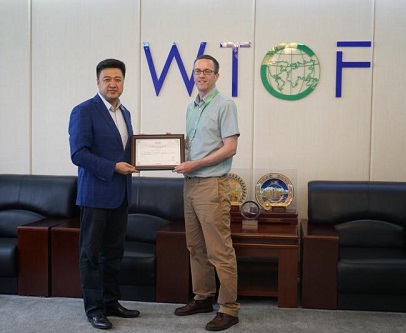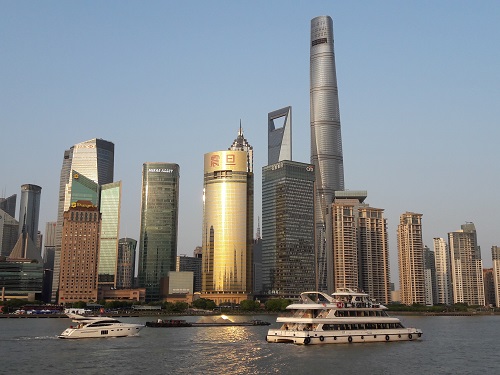 As Chair of Youth Travel Edinburgh, I was recently offered the opportunity to take part in a ten day ‘learning journey’ to China as part of the ETAG China Ready project. Our group of twelve delegates visited Beijing and Shanghai and we were hosted by the World Tourism City Federation (WTCF).
As Chair of Youth Travel Edinburgh, I was recently offered the opportunity to take part in a ten day ‘learning journey’ to China as part of the ETAG China Ready project. Our group of twelve delegates visited Beijing and Shanghai and we were hosted by the World Tourism City Federation (WTCF).
The main aim of the trip was to gain a better understanding of the Chinese market, to immerse ourselves as much as possible into the Chinese culture and way of life. Our insights would help inform the China Ready project, which aims to ensure Edinburgh as a destination is as prepared as possible to welcome and engage with Chinese visitors.
The ETAG China Ready initiative is particularly relevant to the Destination Leaders Programme as the initiative’s early stages were informed by research findings from a group of Year 2 DLP participants, developed for their DLP group project task, between 2014 and 2015.
I had visited China once before on a two week trip with my wife just before the Beijing Olympics in 2008, and we loved it. I had experienced Tiananmen Square; I had witnessed the Great Wall before; as a result, I thought I knew what to expect. Of course, some of it was familiar. The Great Wall itself was still great. Tiananmen Square was still huge. On this return visit however, there were clear signs of significant development over the last nine years; in that everything around these iconic sites was very different. Much of the physical environment seemed a lot more ‘Western’ than I remembered: with more traffic, shiny shopping centres and exuberant skyscrapers.
On the surface China may appear Western in parts, but, as you’d expect from one of the world’s oldest cultures, it has retained its own identity and that identity is very different from what we’re used to. The language is initially the most obvious difference. Often the meaning of a spoken word is conveyed by tone and with over 4000 written characters to learn, Chinese is not a language you can pick up as you go.
In business, the Chinese certainly do things differently. Meeting formalities are stricter, gift etiquette is crucial, colours and gestures are hugely symbolic and respect is shown in different ways. There are numerous unwritten formalities and customs that are waiting to ensure the uninitiated may cause offence. On the trip we were attending formal Chinese business meetings where our delegation sat on one side of the table whilst the local delegation sat on the other. The leaders of each delegation sat in the centre and were the ones expected to do the talking with others invited to talk upon request. It felt unusual to begin with but we got used to it. Communication was always polite and respectful and at the conclusion of the meeting gifts were exchanged.
During the entire trip, we were incredibly well looked after and our hosts did everything they could to put us at ease. They spoke English where possible, even if it was not easy for them. They provided Western food if the Chinese cuisine on offer wasn’t to our liking. They introduced us to their traditions and customs but were not offended if we failed to follow them exactly as we should.

The experience in China gave me the opportunity to be immersed in a truly different culture where the history, customs and language are completely different to anything we know in the West. It made me consider what it must be like for a Chinese visitor to come to Scotland where the history, language and customs are so different.
It’s important for us to remember that if a visitor has chosen to come to Scotland, they have a level of interest, whether in history, culture or simple curiosity. They didn't have to choose Scotland. If working in tourism and hospitality, we have chosen to set an example as to how we welcome visitors to our country. By getting it right, we can help inspire those who may not consider themselves in 'tourism' but who still impact the visitor experience. On reflection, this experience has, in terms of Scotland, prompted the question, ‘Who are we’?
Philosophical considerations aside for now, the question is: ‘Who are we as a nation’? We like to describe ourselves as one of the friendliest nations on earth, but are we? Are we ready to test our ability to be open and welcoming to all? Are we willing to be patient and flexible with those who have different habits, experiences and expectations? Are we willing to adapt the way we typically behave to make visitors from other cultures feel more at home?
I believe the China Ready initiative goes a long way to proving that we are. It offers organisations in Edinburgh - and Scotland - an opportunity to understand what we can do to provide a fantastic welcome and visitor experience to a potentially lucrative and growing market. More than that, it also provides us with an opportunity to re-evaluate who we are and who we'd like to be as a nation.
Over the last thirty years, China has been opening its doors to the world and now presents Scotland’s tourism community with an amazing opportunity to share new experiences. Chinese visitors want to visit Edinburgh and Scotland and they will come - but it’s up to us in the industry to work together, to make the most of the opportunity, to educate ourselves and ensure that we really are “China Ready” for our guests.
Pete Duncan is Chair of Youth Travel Edinburgh and General Manager of The Radical Travel Group (part of the Travel Corporation).
Find information and resources to help your business become #ChinaReady.
Read the DLP Making Edinburgh
China Ready Case Study